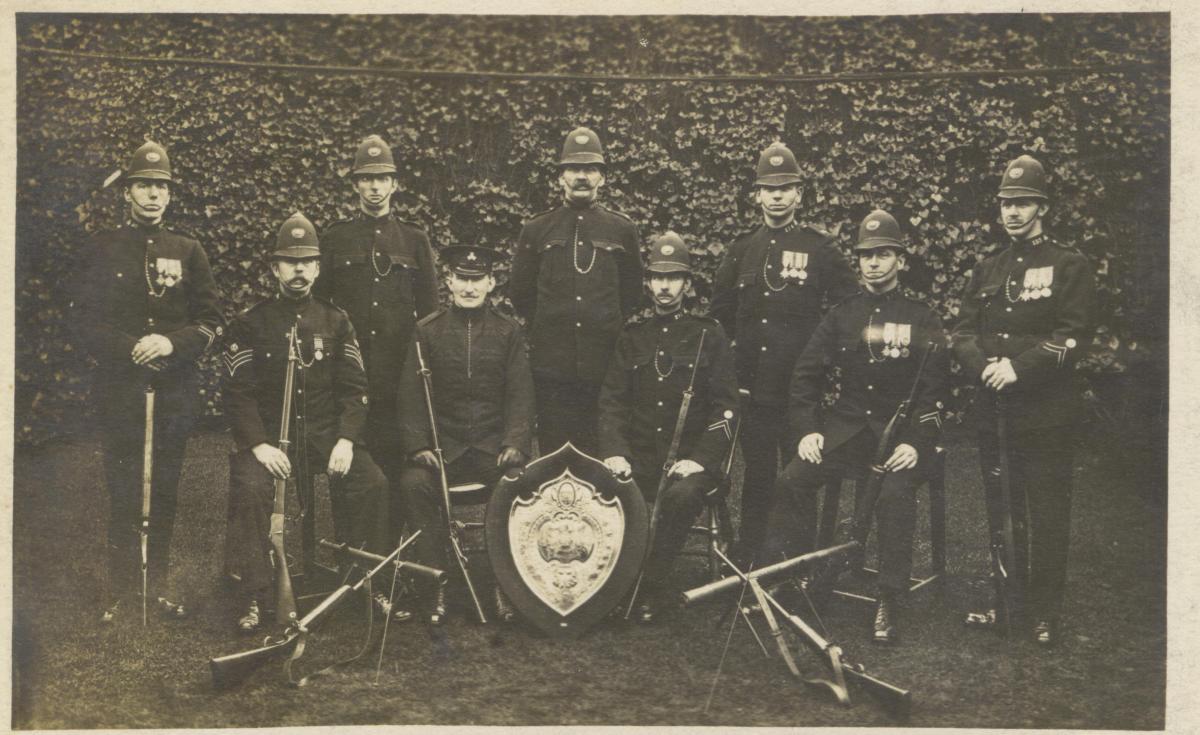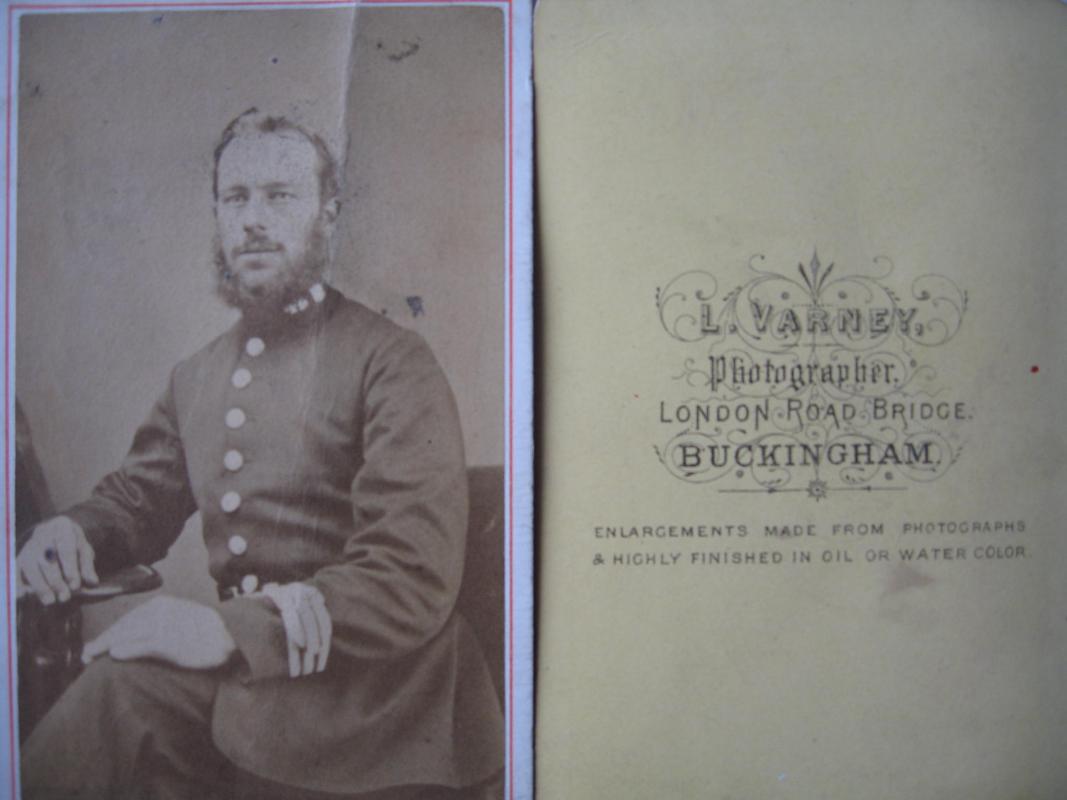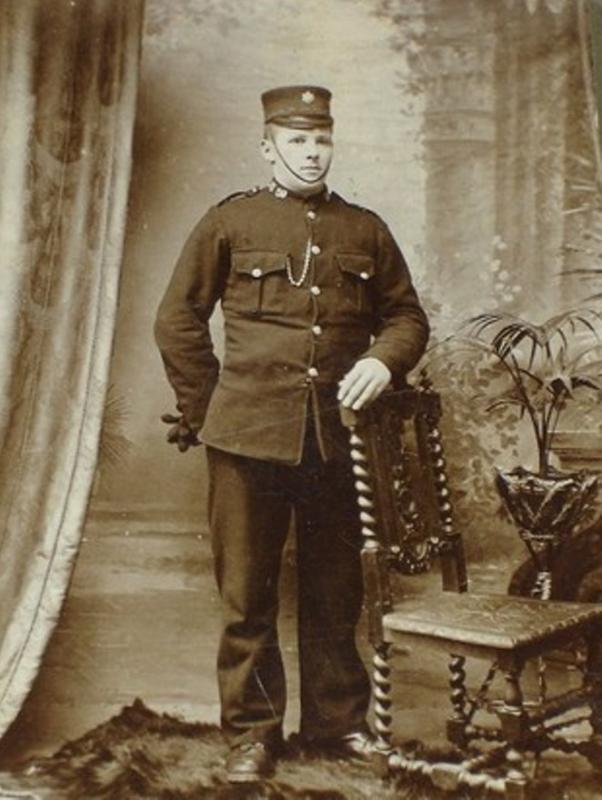-
Posts
76 -
Joined
-
Last visited
Content Type
Profiles
Forums
Blogs
Gallery
Events
Store
Posts posted by Polsa999
-
-
You have made an important point and one which I support.
I have made one or two comments on this forum and elsewhere regarding claims of being the first police force and it has niggled me that Glasgow and Thames police are often overlooked.
My own area of interest and dare I say it, expertise, lies in the railway, dock and canal police. In that I have this interest does not blinker me from acknowledging any properly evidenced research regarding the origins or functions of the early police.
The early railway police are often derided as being no more than controllers of trains, they were certainly more than this although they had this function, but they also managed incidents on railway property and often within the county when called upon to do so. Those who are able to can search the British Newspaper Archives for incidents involving railway police in the 1830's and later will discover a wealth of interesting stories often predating county and city forces.
It is recorded that the London North Western Railway police provided the police function to the township of Crewe until 1884 as did many other railway police forces.
So Rod, well done for raising this point in succh a succint manner.
Steve
0 -
The attached photograph is of a NER police shooting team from around 1922. After research the participants have been identified, one of whom - the sergeant on the left with crowns above his stripes - was known as the Quartermaster Sergeant.
I wondered if anyone is able to identify the rifles in the photo?
Thanks
 0
0 -
Hi Mervyn
History of the railways and their police can be quite complex.
They carried out a number of functions based on the needs of the railway comany and yes they were engaged in controlling the movement of trains, hence the nicknames given to modern day signalmen of 'bobby' or 'officer'. However generally these types of duties ended around the late 1850's early 1860's when mechanical signalling was gradually introduced. There is evidence through a number of sources that railway police were undertaking law enforcement duties long before many county, borough, city and county borough forces existed, for example the LNWR police provided law enforcement to the town of Crewe upto 1884, Wolverton had railway police in the village/town in 1841, fifteen years prior to Bucks Constabulary. Interestingly the BNA has examples of railway police officers being sworn in by County Magistrates to operate throughout their County as police officers and a huge number of matters where the railway police officer was called upon to uphold the law through the areas where railways passed or were being built. A number of the officers were, like county/city officers, killed on duty, similarily many were dismissed for drunkeness and other offences.
If you are able to obtain a copy of 'The Railway Policeman' by J R Whitbread it may make interesting ready or the more recent publication by Pauline Appleby 'A Force on the Move: The story of the British Transport Police 1825-1995'
As a matter of fact, the small red painted end of a truncheon would be too small to be seen by train drivers, all early signalling was undertaken by hand signals, flag signals or mechanical signals similar to those used by police officers controlling road junctions!
You may wish to check out the British Transport Police History Group website - www.btphg.org.uk which may provide more accurate information.
Best wishes
Steve
0 -
.....................With regard to saluting officers - we are not automatons and Police only salute their own officers. The army are ignored unless it is
a ceremonial occasion. With the Metropolitan Police - and remember we started it all - it was always ........
Mervyn
Surely you forgot that the railway police existed loooooong before 1829?
Now that comment should start something!!
Steve
0 -
Hi
I had an idle moment and looked up for some more information, not too much because the fun is in finding it yourself!!
Herbert Richard Tiddy married Martha Clara Kelway (b 3 May 1886), her father was a retired Kent Constabulary officer
Martha Clara died in the 1st Quarter of 1977 in Canterbury at a respectable age of 90
I can only find one child - Richard Mark B Tiddy, born 29 August 1915 in Marylebone District, he died 3rd quarter 1990 in Canterbury
Richard married Patricia Greenhill in Folkestone in the 1st quarter 1953
You can order all UK certificates on line - www.gro.gov.uk/gro/content/certificates
The rest is down to you....LOL.......best of luck
Steve
0 -
Hi Guys
Many thanks for your thoughts.
Firstly I can confirm that Lorton was originally a Bedford officer and then joined the Bucks Constabulary. His service record is held by Mick Shaw who has vast numbers of Bucks officers service records. We know that Lorton was in Buckingham at least once during his service, when he was at the Quarter Sessions and got caught in a pub - he was disciplined. He never served there according to his complete service record. I can find no family connection with Buckingham .
I have seen some armbands of a similar design but they are usually surmounted by a huge brass buckle. Bucks, I am told by Mick, never wore armbands and he has over 2000 photo's of Bucks officers so I guess he must be right.
Certainly a mystery and I am not usually stumped for ideas.........!
Sorry for the delay in responding but I am still suffering with my illness.
Best wishes
Steve
0 -
Great research to support this group.
One observation:
Detective rank is not a promotion !

I think you will find that it was considered so in 1894

Good research and brilliantly presented...well done !
0 -
I am adding this question to this topic as it is about Duty Armbands.
My friend is the unofficial archivist of the Buckinghamshire Constabulary, he holds over 2000 photo's of officers from 1857 onwards and has a web site which contains details of hundreds of officers - http://www.mkheritage.co.uk/bch/index.html - The photo is of PC 42 Joseph Lorton who served, prior to joining Bucks, in Bedfordshire. He served from 22 November 1875 to 14th January 1901. We believe that the photo may have been taken to celebrate his retirement, but wonder what is the significance of the armband on his left sleeve. We know that armbands were not worn by Bucks officers and there is no evidence of them being worn by Beds officers.
Can anyone come up with a sugestion why the armband was being worn?
(Although the full web site details are shown on my preview, they do not come out in the reply....e.co.uk should be added)
Moderator please delete web site details if not allowed.
Steve
 0
0 -
Hi Monty
I too saw this photo for sale on Ebay. I am 90% certain that it is not of a police officer and certainly not from a railway company. When I saw it and spoke with the seller, I concluded that it was a telegram boy. Hope that this helps. Steve
0 -
Sorry, have been very poorly so have not been paying attention to all this......will try to keep up to date, but still not good.
0 -
Sorry Nick, what are you saying?
0 -
Hi Nick
Thanks for taking part....I will let you know whether you are correct when we have had some other guesses....here is a close up of the lh Hird plate.....not brilliant I know but it may help..
 0
0 -
And the last one for now
 0
0 -
http://gmic.co.uk/uploads/monthly_05_2012/post-13074-0-45288700-1337715289.jpghttp://gmic.co.uk/uploads/monthly_05_2012/post-13074-0-04947100-1337715350.jpg
0 -
These are the next photo's for Guess the Force, enjoy.
http://gmic.co.uk/uploads/monthly_05_2012/post-13074-0-52117600-1337714863.jpghttp://gmic.co.uk/uploads/monthly_05_2012/post-13074-0-00686400-1337714899.jpghttp://gmic.co.uk/uploads/monthly_05_2012/post-13074-0-34295400-1337714922.jpg
0 -
Hi Mervyn
This is the starter for the competition and then put up around another 6 to 8 images for the competition in the next few days...probably all at the same time. Is that OK?
Health OK at the moment thanks.
Best wishes
Steve
0 -
Guess The Force!
These are images of two brothers, George and Edward Hird. Both joined the police service but in two different Forces. Your task is to identify the decade and the forces.
Good Luck
Steve
 0
0 -
Hi Brian
My experience of the Nipper was that the small loop was placed around the prisoners wrist with the larger loop being held by the custodian. My own Force would not allow the use of them, I believe that many Forces were similar, as they had a tendancy to easily break a prisoners wrist!
Steve
0 -
So does this mean that they will actually be wearing headgear on their heads...cos if they dont I am not sure that in a disturbance anyone will recognise that police have arrived.....yes I know the headgear is the first thing to go in a punch up!! ;)
0 -
Hi Guys
Sorry have not been around for a few weeks...have been a bit poorly...however hope to upload some competition photos in the near future, I am sure that Mervyn will sort out a prize!!
0 -
Thanks Milice - of course you are absolutely correct......age sometimes has a strange effect on ones mind. Conveyance of Queen Victoria to Windsor and Sandringham certainly earnt the right to wear the Crown. Thanks again for pointing out my mistake. Steve
0 -
No problems Nick....I know the feeling..my arms are not long enough these days to allow me to focus.....also the pics are not brilliant....Best wishes
0 -
Hi Mervyn
The badge I use is of the Great Western Railway police prior to them receiving the Kings crown to top it, most railway police forces did not receive the right to wear the crown until after the first amalgamations of the railway companies in 1922. This was probably due to some commercial or political considerations. Pay parity, conditions of service etc.
If you have access to my email address then make contact that way and we can discuss the competition. To make use of 20 photographs is not a problem for me, but bandwidth may be the issue because they need to be of high resolution in order to make them 'seeable'. Any suggestions on the best way to upload them because currently I can probably only place two photo's per post?
All the best
Steve
0 -
Thanks Nick.....are you able to supply a reference to the information, especially regarding the coat of arms as all my information suggest that the Arms were not given until 1950 also that under the Local Government Act 1894 the area became the Audenshaw Urban District, a local government district in the Ashton-under-Lyne Poor Law Union and the administrative county of Lancashire.
The information regarding which railway station it was, was provided by the secretary of the Lancashire & Yorkshire Railway Society who also told me that the National Railway Museum had a total of 3 photo's for the visit including the one I have.
The feathers are definately relating to the PoW, I checked his web site and I also had the advantage of re examining the original photo......the ones I uploaded are not brilliant.
But thanks once again for your views they stimulated me to research a bit further.. Steve
0




Railway Police - Truncheon
in Great Britain: Mervyn Mitton's British & Colonial Police Forces
Posted
Hi Peter
The London & Brighton Railway was formed by an Act of Parliament in 1837 and construction would have started soon after, like all railways lack of funds or the intransigence of landowners meant that often the railway was built piecemeal. This particular railway was amalgamted with a few others in 1846 to form the London, Brighton & South Coast Railway.
Any artifact which has survived will be of considerable interest to collectors.
The railway would probably have been forced to either employ their own special constables or to pay for those provided by the county. In this case it is likely that because of the insignia these constables were railway employed. Their duties would have been to uphold the law as the railways were being built, ensuring that the navvies behaved themselves and railway interests were protected. What must have been an onerous and dangerous task.
Although I am no collector of truncheons, I am an afficiado of all things connected with railway, dock and canal policing and have been for over 30 years.
Value will depend upon condition but I suspect that figures around the £100 to £200 mark would nt be so crazy......however there are collectors on here who may come up with a better estimate?
Good luck.
Steve